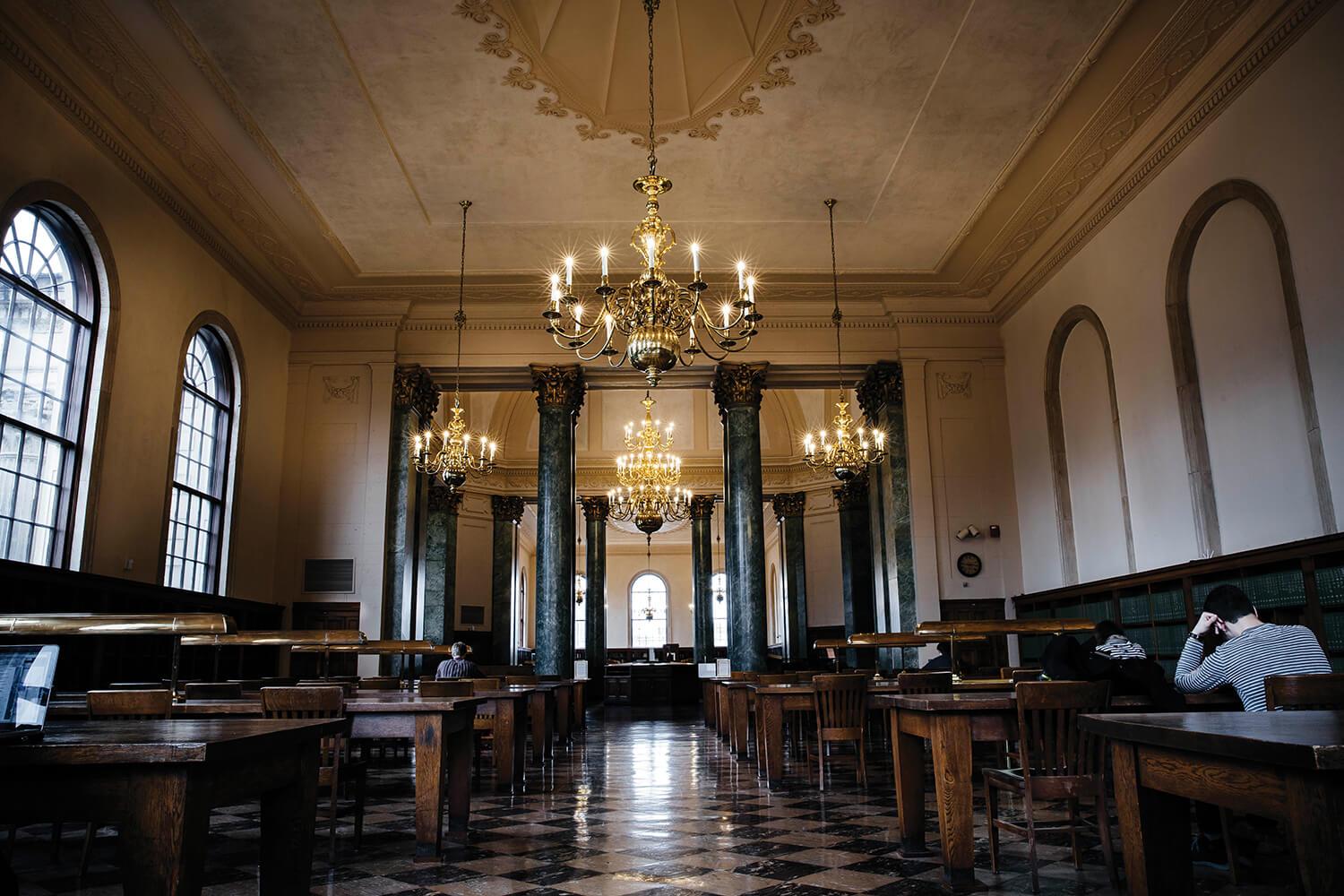Wilson Library is one of the most uniquely beautiful places I have ever visited. Even though our class excursion was not my first visit to Wilson, the subtle architectural beauty captivates me, as does its likeness to many of the buildings in the Harry Potter novel series. The architecture of the overall structure is incredible, and the interior matches the facade’s grandeur. My favorite room is the upstairs open study hall with its massive gold chandeliers and rows of bookshelves. I often visit this room when I need pure focus and a quiet atmosphere. However, during our class visit, I finally was able to experience the storing and preservation aspect of the library through our investigation of the rare book collection.
The subject of our visit was particularly interesting to me as I have always loved to learn about 18th-century and 19th-century history. Objects from older time periods fascinate me, and I often wonder about life during those particular eras. Our trip to Wilson Library only heightened that obsession as I perused its collection of many rare books. However, one particular piece caught my attention more than others: The Life and Adventures of Robinson Crusoe of York, Mariner: With An Account of His Travels Round Three Parts of the Globe. Throughout our class study of classic fiction novels and adaptations, Robinson Crusoe remains my favorite text. This love of Defoe’s novel led me to look for adaptations of it on display in the rare book collection.
This particular edition first caught my eye because if its worn state. The cardboard binding was on full display, and the pages were tattered and worn. The book looked well-loved as it was almost falling apart. The smaller than average dimensions of the book created easy portability for the reader. The intricate designs on the front cover added an aura of distinctness to the book, in spite of its weathered exterior. The timeworn pages looked extremely thin and fragile, perhaps made this way to produce a cheaper product, allowing for mass production and accessibility for all social classes.
The inside of the front cover contained a myriad of drawings, all depicting various scenes from the book. The etchings were abstract but understandable and incredibly intricate. Upon further investigation with the library assistant, I learned that this book was George Cruikshank’s a personal copy of Robinson Crusoe from when he was a child. Cruikshank was the illustrator for Charles Dickens. I was astounded by this information as both of these men gained fame in their time and the public still recognizes their contributions today.
All trips to Wilson Library are special to me as it is a distinguished space where I feel privileged to visit. This particular visit affected me as it was fascinating to get hands-on experience with these miniature pieces of history. The condition of the books on display amazed me, and I often felt hesitant to touch them for fear of harming them. I enjoyed the privilege of viewing such well-preserved pieces of art, and I am thankful that the university invested in collecting these rare books. I will definitely visit again in order to discover more about the unique collections on display.


